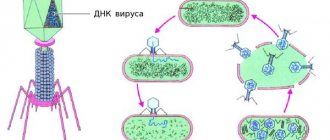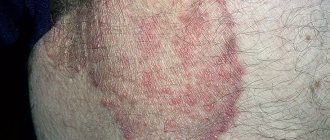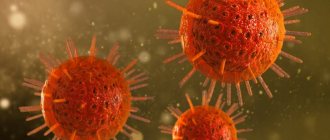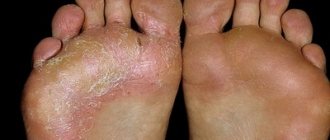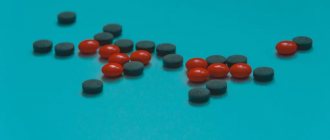Thrush in men is not as well known and does not receive as much attention, articles, or advertising as female thrush or vulvovaginal candidiasis.
This disease can also occur in men, and it occurs quite often, affecting the glans penis, skin of the foreskin, urethra, scrotum, inguinal fold, intergluteal fold, interdigital spaces, mucous membrane of the corners of the mouth, tongue, cheeks and pharynx. In severe cases, candidiasis spreads to the entire gastrointestinal tract and respiratory tract.
Therefore, this problem, that is, thrush in men, the symptoms and treatment of this disease remain relevant for doctors and patients. Moreover, there is very little reliable information in the public domain.
Patients often come to me with redness on the penis, ulcers, rashes in the groin and oropharynx. Many of them had unprotected sexual contact with an unfamiliar woman, some with a man. Consequently, they are afraid of contracting a sexually transmitted disease and associate these symptoms with it. Some men cannot even understand where these rashes and itching come from. It seemed like he didn’t even walk to the left, but the whole penis was red, swollen and itchy. So, after examination and diagnosis, they learn about the presence of a disease such as thrush in men, and sometimes about the presence of diabetes mellitus. But more on that below...
Thrush in men is caused by a yeast-like fungus such as Candida of various strains:
- Candida albikans is the most common type of this fungus in our country. But it is already beginning to be gradually replaced by other types of candida brought from abroad, such as:
- Candida krusei
- Candida tropicalis
- Candida parapsilosis
- Candida glabrata and some other rare fungi.
Determining the type of fungus is quite important for planning therapy. Of course, ideally you need to know not only it, but also Candida’s sensitivity to drugs. True, this does not always work out, because cultures, unfortunately, do not provide reliable information every time, but it is much easier to determine the type using PCR. This allows us to predict the effectiveness of fluconazole treatment for diseases caused by various types of candida.
Causes of thrush in men
The causes of candidiasis in men are different, but all one way or another lead to the proliferation of the Candida fungus:
- weak immunity;
- lack of hygiene;
- as a result of unprotected sexual intercourse;
- long-term use of medications/antibiotics;
- sudden change in climatic conditions;
- presence of depression, stress;
The cause may also be a dysfunction of the intestine, as well as its microflora due to damage to the mucous membrane and the development of an inflammatory reaction.
Reasons for the development of candidiasis
What causes thrush? This disease occurs from infection by candida fungi. By their origin, they are relatives of the well-known yeast. These parasites are usually controlled by the human immune system and pose no threat to the body.
Infection can occur due to the following factors:
- Dysbacteriosis is one of the most important causes of the clinical manifestation of candidiasis.;
- the occurrence of endocrine disorders in the human body;
- stressful situations in a man’s life;
- emotional turmoil;
- immunodeficiency - both acquired and congenital;
- drug overdose;
- work related to changing climate and time zones;
- injuries of various types;
- diabetes;
- penetration of viral pathogens of infectious diseases into the body;
- violation or failure to comply with the rules of hygiene of the oral cavity, genitals and other parts of the male body.
In such cases, the fungus activates and thrush occurs. This manifests itself during sexual intercourse - single-celled organisms transfer to the man’s body
What type of thrush does it have in men?
Candidiasis in men most often appears on the head of the penis, causing irritation, pathological discharge and redness. Thrush often occurs in men with uncircumcised foreskin. In this case, the fungus receives more favorable conditions for life and reproduction. When candidiasis occurs, characteristic signs are observed - unpleasant itching and the appearance of a white coating on the mucous membrane. You can determine the disease yourself; you just need to know what it looks like on your underwear. Thrush leaves a thick white or yellow coating on panties.
Causes
The appearance of a fungal infection is usually caused by weakened immunity and stress. Bad habits aggravate the situation: excessive alcohol consumption, smoking. Due to a decrease in the protective function, the body cannot cope with maintaining a safe amount of fungal forms, and they enter the phase of active reproduction.
External causes include hypothermia, which also contributes to a decrease in immunity. Therefore, candidiasis can develop against the background of a common cold.
Unprotected sexual intercourse also provokes the active development of infection. Candidiasis itself is not transmitted from partner to partner, but during sex without barrier contraceptives (condoms), fungal microorganisms are exchanged. Usually they do not take root, but if the immunity of one of the partners is weak, the fungi survive, which leads to the development of the disease.
In addition, unprotected sex leads to the risk of contracting STDs, which greatly affect the body's protective properties and can become an additional reason for the active proliferation of Candida fungi.
Manifestation of thrush in men
The appearance of characteristic signs of the disease in men is determined by the location of the lesion. If candidiasis appears on the skin, blisters and redness form, and on the mucous membranes - a type of infectious lesion.
The main symptoms of thrush in men are:
- unpleasant sensation of burning and itching;
- swelling of the penis appears;
- pathological discharge with an unpleasant odor appears;
- pathological secretion during urination, similar in appearance to seminal fluid;
- pain and discomfort during sexual intercourse;
The disease has an incubation period, and diagnosis and treatment depend on its duration. Most often this period lasts 2-3 weeks. During this time, symptoms may not appear, but the fungi are already multiplying in the body.
Diagnostics
It is carried out according to the following system:
- external examination of the patient and identification of visible signs of thrush;
- analyzes of scrapings from the patient’s penis or damaged area of skin, oral mucosa to detect fungal infection;
- research using a microscope;
- complete laboratory examination of the patient’s body.
Once the type of thrush has been established, appropriate treatment is prescribed not only for the man himself, but also for his sexual partner.
Treatment of thrush in men
Treatment of candidiasis is always completely individual. The course of therapy is prescribed only by a urologist or dermatovenerologist. He assesses the patient’s medical history, age and lifestyle, and then prescribes the necessary treatment. It is strictly prohibited to treat candidiasis at home without going to the doctor. This can lead to complications.
To make a final diagnosis, the patient must take a smear to examine the bacterial flora. In addition to this, several more tests may be prescribed:
- donating blood and genital swabs;
- determination of blood glucose levels;
- blood for HIV;
- general blood and urine analysis.
In case of candidiasis due to other reasons, the necessary treatment is required from highly specialized specialists. If no other pathologies are found, a course of therapy is prescribed and the patient is sent home for treatment.
Men get sick 4 times less often than women, so the choice of drugs for the stronger half of humanity is much smaller. For local treatment, antifungal ointments are used, and tablets that kill the fungus are taken orally. Among the ointments one can highlight pimafucin, clotrimazole, nystatin and others.
Rules to follow during treatment
During the therapy period, it is necessary to avoid sexual intercourse so as not to provoke the development of the disease. If possible, you should stop smoking and not drink alcoholic beverages. Avoid hypothermia and stress.
To reduce symptoms, it is recommended to choose loose underwear and clothing, and ensure that the groin area remains dry.
Nutrition:
- Eliminate sugar, fast carbohydrates, yeast and other fermentation products: they contribute to the development of fungal forms.
- Add fermented milk products with live cultures, whole grains, fresh and thermally processed vegetables and fruits to your diet.
Compliance with the diet will strengthen the body's protective functions and shorten the period of the disease, and the formation of healthy eating habits will eliminate the risk of relapse.
Nutrition and diet
During treatment of candidiasis, men should pay special attention to their diet:
- It is highly recommended not to eat dairy products (only lactose-free products are allowed), as well as vegetables from the nightshade family - potatoes, zucchini, tomatoes.
- Exclude flour products, fried meat, spicy seasonings, smoked foods, canned food, sweets and alcoholic beverages from your daily diet.
- Include fresh fruits and vegetables such as cabbage, cucumbers, green salad, and garlic in your daily menu.
It is not difficult to avoid candidiasis, the main thing is to take good care of your health.
Can a man infect a woman during sexual intercourse?
Despite the fact that urogenital candidiasis is an infection that affects the organs of the genitourinary system, it is not classified as a sexually transmitted infection. Both sexually active men and those who have never had sexual intercourse can get sick.
If a man is healthy and his partner has genital candidiasis (usually vulvovaginal candidiasis - damage to the vagina and vulva), he does not need to start treatment in the absence of symptoms of a fungal infection. The very fact of sexual contact with a sick woman will not necessarily lead to the development of infection in a man - as a rule, for this to happen, his immunity must still be reduced.
However, you should avoid having unprotected sex with a partner who has signs of urogenital candidiasis until she has been accurately diagnosed.
Drug therapy
Local therapy includes the use of various ointments and creams. The treatment uses agents that have an antifungal effect. These drugs contain active medicinal substances that have a detrimental effect on the causative agent of the disease.
The drugs destroy fungal cells and contribute to its death. Typically, such ointments include the substance imidazole, which neutralizes pathogenic microorganisms.
Among the most effective are creams containing imidazole:
- Clotrimazole;
- Econazole;
- Ketoconazole;
- Miconazole;
- Nystatin (belongs to a special class of antifungal agents, commercially available under numerous brands).
Even if symptoms of candidiasis have been detected in a man before, he should definitely consult a specialist. Also, do not neglect a visit to the doctor if the procedures already used are ineffective.
An integrated approach - combining tablets and external creams and ointments, guarantees a quick recovery and reduces the risk of relapse to a minimum.
The following drugs are very popular:
- Diflucan;
- Forkan;
- Fluconazole;
- Flucostat and others.
It is enough to take one tablet of the prescribed medication for complete recovery. Medicines are well tolerated by the body and rarely cause side effects. It is prohibited to buy or take any medications on your own. Only a qualified specialist, after conducting the necessary tests, will prescribe the correct course and required dosage.
Hygiene
If thrush is detected in the early stages, when its symptoms are mild, treatment does not necessarily involve hospitalization. Self-improvement is quite enough (if a specialist allows it).
For this, good hygiene is enough, which not only treats, but also prevents thrush, since all yeast infections develop in moist, warm places. Additionally, the use of antifungal creams and drugs that are equally effective in killing fungi is required.
What it is?
Candida fungus is a microscopic simple organism consisting of a single cell and belongs to the class of fungi. There are more than 150 species of this organism, 20 of which successfully reproduce on the surface of the human body and on its mucous membranes.
The candida cell has an oval shape. When it enters the human body, it determines the habitat as favorable or unfavorable. In the first case, the fungus begins to actively multiply, increasing the number of microorganisms. This leads to the formation of a large number of decay products, thereby causing intoxication of the human body and the initial process of the disease. In the second case, when the environment for the reproduction of candida is unfavorable, and the body’s immune forces successfully cope with the fungal bacterium, it becomes covered with a dense shell and waits for the right moment to activate the reproduction process.
Candida is widespread in the environment, especially in acid-alkaline environments, so the method of infection can be very diverse - from a simple handshake to eaten fruit bought in a store. However, in 95% of cases the mode of transmission is indicated through sexual intercourse.
Causes
Many factors contribute to the development of the disease:
- Taking antibiotics. Normally, the human body contains a small amount of Candida fungi, but they are in balance with beneficial microflora. Taking specific medications destroys beneficial and harmful bacteria, upsetting the balance. The process causes the development of infection.
- Anemia, cancer, and other pathologies increase the chance of becoming the owner of candidiasis. It’s not the ailments themselves that are scary, but the methods of treating them; aggressive drugs negatively affect the body’s defenses, reducing resistance to fungi.
- Failure to comply with personal hygiene rules. Fungi love a moist and warm environment; the absence of regular showers or not wiping the genitals after taking a bath creates a favorable environment for the proliferation of pathogenic microflora. An important role is played by the use of shower gels and lotions with various fragrances. In some cases, chemical components cause irritation, as a result of which candidiasis develops with greater force.
- The course of diabetes (type 1–2), the presence of HIV infection, and, as a result, reduced immunity are unable to cope with the proliferation of pathogenic microflora. Men with serious illnesses are at risk of developing thrush.
- Obesity. Excess weight in a person is characterized by the presence of a large amount of fatty tissue under the skin, which creates favorable conditions for the development of thrush. In addition, uncontrolled weight encourages the development of all kinds of diseases of organs and systems.
Particular attention should be paid to the fact that candidiasis can be transmitted sexually through sex with an infected partner. At the first signs of the disease, it is very important not to self-medicate and not show unnecessary embarrassment, but to consult a doctor.


